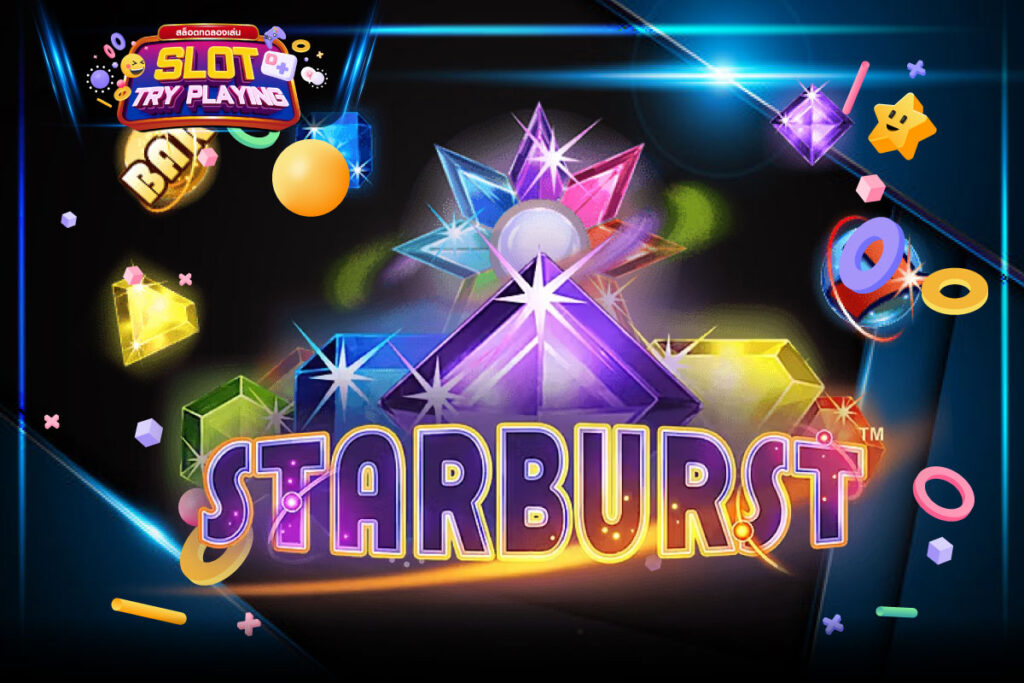ทดลองเล่นสล็อต PG รวมเกมฟรีสปินทุกค่าย ไม่ต้องลงทุน ระบบดีที่สุด อันดับ 1
ก่อนจะไปลงทุนกับเกมสล็อต เรามาทดลองดูก่อนไหม โดยการ ทดลองเล่นสล็อต เป็นทางเลือกที่น่าสนใจสำหรับผู้เล่นทุกระดับ ด้วยโอกาสได้สัมผัสเกมจากค่ายชั้นนำทั่วโลกฟรี โดยไม่ต้องลงทุนแม้แต่บาทเดียว คุณสามารถทดลองเล่นได้อย่างไม่มีข้อจำกัด เพื่อเรียนรู้กฎกติกา ฝึกฝนทักษะ และค้นหาเกมที่ชื่นชอบก่อนที่จะตัดสินใจเดิมพันด้วยเงินจริง สนุกไปกับภาพกราฟิกสุดอลังการ เสียงเอฟเฟกต์ที่น่าตื่นเต้น และโอกาสลุ้นรางวัลใหญ่แบบไม่มีเบื่อ พร้อมเปิดประสบการณ์ใหม่ๆ ให้คุณได้เพลิดเพลินและสร้างรายได้เสริมได้อย่างมั่นใจทุกเวลา ซึ่งต้องบอกเลยว่าเกม ทดลองเล่น มีประโยชน์อย่างมาก นักพนันจึงไม่ควรพลาดที่จะเข้ามาเทสเกมฟรีกันก่อน
เนื้อหาในเว็บ
ทดลองเล่นสล็อต โหมดเกมฟรี อัปเดตล่าสุดในปี 2025
ต้องบอกเลยว่าในปี 2025 นี้ การ ทดลองเล่นสล็อต pg ได้รับการอัปเดตให้มีความทันสมัยและน่าตื่นเต้นมากยิ่งขึ้น ด้วยโหมดเกมฟรีที่เปิดให้ผู้เล่นได้สัมผัสประสบการณ์ใหม่ๆ อย่างเต็มอิ่ม ไม่ว่าจะเป็นเกมจากค่ายดังหรือเกมใหม่ล่าสุดที่เพิ่งเปิดตัว คุณสามารถเข้ามาทดลองเล่นได้ทุกเกมโดยไม่ต้องเสียค่าใช้จ่ายใดๆ ทั้งสิ้น โหมดเกมฟรีนี้เหมาะสำหรับผู้เริ่มต้นที่ต้องการเรียนรู้กฎกติกาและกลยุทธ์ รวมถึงนักเล่นสล็อตมืออาชีพที่ต้องการฝึกฝนเทคนิคและทดลองเล่นเกมใหม่ๆ ก่อนลงทุนจริง นอกจากนี้ ระบบอัปเดตล่าสุดยังเพิ่มฟีเจอร์พิเศษ เช่น ระบบแจ็คพอตโบนัส และแจก สล็อตฟรีสปิน มากขึ้น ทำให้คุณได้สนุกอย่างจุใจเลยทีเดียว
การ ทดลองเล่นสล็อต คืออะไร?
การ ทดลองเล่นสล็อต เป็นโหมดการเล่นที่ให้นักพนันได้สัมผัสประสบการณ์เกมโดยไม่ต้องใช้เงินจริง โดยทั่วไปแล้วจะเป็นเวอร์ชันทดลองที่ทางเว็บไซต์หรือค่ายเกมจัดเตรียมไว้ เพื่อให้ผู้เล่นสามารถเข้าไปลองเล่นและศึกษากติกา รูปแบบของเกม รวมถึงฟีเจอร์พิเศษต่างๆ ได้อย่างเต็มที่ โดยไม่ต้องกังวลเรื่องการเสียเงิน การเล่น สล็อตทดลอง นี้เหมาะสำหรับผู้ที่เริ่มต้นเรียนรู้วิธีเล่น หรือผู้ที่ต้องการทดลองหาเกมที่ชอบและเหมาะสมกับสไตล์ของตนเอง ช่วยเพิ่มความมั่นใจและความเข้าใจในเกมมากขึ้น ทำให้การเล่น สล็อต ในรอบจริงเป็นไปอย่างสนุก และมีโอกาสชนะมากขึ้น
ข้อดีของการ ทดลองเล่นเกมสล็อตฟรี มีอะไรบ้าง
การ ทดลองเล่นสล็อต มีประโยชน์อย่างมากสำหรับผู้ที่สนใจหรือต้องการเริ่มต้นเล่น เกมสล็อต โดยไม่ต้องเสี่ยงกับการลงทุนเงินจริง โดยข้อดีของเกมสล็อตเดโมฟรีจะมีอะไรบ้าง ก็ต้องมาดูกันเลย
ได้ทำความรู้จักและคุ้นเคยกับเกมสล็อต
การทดลองเล่นช่วยให้ผู้เล่นได้ทำความคุ้นเคยกับกฎกติกา รูปแบบการเล่น และฟีเจอร์ต่างๆ ของเกมสล็อตได้อย่างละเอียด โดยไม่ต้องกังวลว่าจะเสียเงิน สามารถศึกษารูปแบบการหมุนวงล้อ, การรวมสัญลักษณ์, และระบบรางวัลต่างๆ ได้อย่างเต็มที่ ทำให้ผู้เล่นมีความเข้าใจเกมมากขึ้น และสามารถตัดสินใจเลือกเกมที่เหมาะสมกับความชอบและสไตล์การเล่นได้อย่างมีประสิทธิภาพ
ค้นหาเกมที่เหมาะกับตนเองที่สุด
การทดลองเล่น นักพนันสามารถลองเล่นเกมสล็อตได้หลากหลายรูปแบบ ช่วยให้ค้นพบเกมที่ตรงกับความชอบและสไตล์การเล่นของตนเองได้อย่างแม่นยำ พบกับ สล็อตทดลองเล่น ทั้งในด้านธีม, ฟีเจอร์พิเศษ, และความยากง่ายของการเล่น ช่วยให้ตัดสินใจได้ง่ายขึ้น ว่าเกมไหนเหมาะสมกับตนเองมากที่สุด
ลองเล่นเกมที่ออกใหม่ ก่อนจะเดิมพันจริง
การทดลองเล่นเป็นโอกาสที่ดีในการลองเล่นเกมสล็อตใหม่ๆ ที่เพิ่งเปิดตัว โดยไม่ต้องกลัวการลงทุนที่เสี่ยง สามารถเรียนรู้กฎกติกาและฟีเจอร์พิเศษต่างๆ ของเกมใหม่ได้อย่างรวดเร็ว ทำให้ผู้เล่นสามารถตัดสินใจได้ดีก่อนที่จะลงเดิมพันจริง และเตรียมความพร้อมที่จะรับมือกับเกมใหม่ได้มากขึ้น
นำเทคนิค สูตรต่างๆ มาลองใช้ก่อนได้
ก่อนลงทุนเล่นด้วยเงินจริง ผู้เล่นสามารถใช้โอกาสจากการทดลองเล่นในการทดลองใช้เทคนิคและสูตรต่างๆ ที่ศึกษาจากแหล่งข้อมูล เช่น การวางแผนการเดิมพัน, การเลือกเกมที่มีโอกาสชนะสูง, หรือการบริหารเงินทุนอย่างมีประสิทธิภาพ ช่วยให้ผู้เล่นมีความพร้อมมากขึ้นก่อนลงเดิมพันจริง และเพิ่มโอกาสในการชนะมากกว่าเดิม
ฝึกฝนฝีมือ เพิ่มทักษะในการเล่นสล็อต
การทดลองเล่นเป็นโอกาสที่ดีในการฝึกฝนฝีมือและเพิ่มทักษะในการเล่นสล็อต ผู้เล่นสามารถฝึกฝนการตัดสินใจ, การวางแผนการเดิมพัน, และการจัดการเงินทุน ทำให้มีความชำนาญมากขึ้นในการเล่นเกมสล็อต และสามารถทำเงินเมื่อเดิมพันจริงได้อย่างง่ายดาย
เล่นเพื่อสนุกผ่อนคลายได้
คุณสามารถมาสนุกกับการ ทดลองเล่นสล็อตฟรี เพื่อความผ่อนคลายได้ เพราะไม่ต้องใช้เงินจริง จึงไม่ทำให้รู้สึกเครียด แม้ว่าจะเล่นเกมแพ้ก็ตาม ซึ่งหากใครยังไม่พร้อมจะลงทุนจริง แต่อยากเล่นสล็อตแบบสนุกๆ เพลิดเพลิน เกมทดลองเล่นก็ถือเป็นตัวเลือกที่ดีที่สุด เหมาะกับการเล่นเพื่อความผ่อนคลาย สร้างความสนุกได้แบบไม่จำกัดเลยทีเดียว
เล่นเกมสล็อตเดโมฟรี สนุกได้ทุกค่าย ที่มีให้เล่นบนเว็บ
เรามีเกมทดลอง ให้คุณเล่นฟรีได้ครบครันทุกค่ายเลย เพื่อให้คุณได้ทำความคุ้นเคยกับเกมสล็อต จากทุกค่ายดังอย่างครบครัน ไม่ว่าจะเป็นค่ายเก่าๆ หรือค่ายใหม่ที่มาแรง โดยสามารถ ทดลองเล่นสล็อต ค่ายไหนได้บ้าง และจะสนุกถูกใจมากแค่ไหนก็ต้องมาดูกันเลย เรารวบรวมมาแนะนำกันแล้ว
ทดลองเล่นสล็อตค่าย PG SLOT
ค่าย PG SLOT เป็นหนึ่งในค่ายเกมสล็อตที่ได้รับความนิยมสูงสุด ด้วยภาพกราฟิกสวยงามและฟีเจอร์ที่น่าตื่นเต้น การ ทดลองเล่นสล็อต pg ฟรีเป็นโอกาสดีที่จะได้สัมผัสความสนุกและเรียนรู้กลยุทธ์ก่อนเดิมพันจริง คุณจะได้ทดลองเล่นเกมสล็อตยอดนิยม เช่น Fortune Gods, Medusa, หรือ Caishen Wins ซึ่งแต่ละเกมมีความโดดเด่นในเรื่องของธีมและโบนัสพิเศษ รวมถึงเกม ทดลองเล่นสล็อต pg ซื้อฟรีสปิน การทดลองเล่นช่วยให้คุณเข้าใจระบบการจ่ายเงินและการทำงานของฟีเจอร์พิเศษต่างๆ ได้อย่างเต็มที่ ก่อนที่จะลงเดิมพันด้วยเงินจริง ทำให้คุณมั่นใจและเตรียมความพร้อมให้พร้อมสำหรับการเล่นจริงในอนาคต ที่สำคัญ ทดลองเล่นสล็อต pg ไม่ เด้ง แน่นอน เพราะมีความเสถียรมาก
ทดลองเล่นสล็อตค่าย Pragmatic Play
Pragmatic Play เป็นค่ายเกมที่ขึ้นชื่อเรื่องความหลากหลายและคุณภาพของเกมสล็อต ทดลองเล่นสล็อต ฟรีจากค่ายนี้จะทำให้คุณได้สัมผัสกับเกมที่มีภาพสวยงามและฟีเจอร์น่าตื่นเต้น เช่น Wolf Gold, Sweet Bonanza, หรือ The Dog House แต่ละเกมมีระบบโบนัสและแจ็คพอตที่น่าทึ่ง การทดลองเล่นช่วยให้คุณเข้าใจกลไกของเกมและฝึกฝนกลยุทธ์การเล่นอย่างมีประสิทธิภาพ โดยไม่ต้องเสี่ยงลงทุนจริง จึงเป็นโอกาสดีในการเตรียมความพร้อมก่อนลงเดิมพันจริง รับรองว่าการเล่น สล็อตทดลอง pp ฟรีจะช่วยเพิ่มความมั่นใจและความสนุกให้กับทุกการเล่นของคุณ
ทดลองเล่นสล็อตค่าย Joker Gaming
Joker Gaming เป็นหนึ่งในค่ายเกมสล็อตที่เน้นความสนุกสนานและความบันเทิง ด้วยเกมสล็อตที่มีธีมหลากหลายและระบบโบนัสที่น่าตื่นเต้น การทดลองเล่นสล็อต Joker Gaming ฟรีเป็นวิธีที่ดีในการทำความรู้จักกับเกมยอดนิยม เช่น Joker Madness, Joker’s Jewels, หรือ Joker’s Luck ซึ่งแต่ละเกมมีกราฟิกสีสันสดใสและฟีเจอร์พิเศษที่ช่วยเพิ่มโอกาสในการชนะ การทดลองเล่นให้คุณได้ฝึกฝนและศึกษาการทำงานของเกมก่อนลงเงินจริง ช่วยให้คุณวางแผนกลยุทธ์และเพิ่มความมั่นใจในการเดิมพันจริงๆ ได้เป็นอย่างดี สนุกและเรียนรู้ไปพร้อมกันบนเว็บของเรา
ทดลองเล่นสล็อตค่าย Spadegaming
Spadegaming เป็นค่ายเกมสล็อตที่มีชื่อเสียงในด้านการนำเสนอธีมที่น่าตื่นเต้นและเทคโนโลยีล้ำสมัย การทดลองเล่นสล็อตฟรีจากค่ายนี้ จะพาคุณไปสัมผัสกับเกมที่มีกราฟิกสมจริงและเสียงประกอบที่น่าตื่นเต้น เช่น Golden Monkey, Dragon Gold, หรือ Jungle King ซึ่งแต่ละเกมมาพร้อมกับฟีเจอร์โบนัสและแจ็คพอตที่น่าตื่นเต้น การทดลองเล่นช่วยให้คุณเข้าใจกลไกของเกมและสามารถวางกลยุทธ์ในการเดิมพันจริงได้อย่างมั่นใจ เพิ่มโอกาสในการชนะและทำกำไรได้มากขึ้น พร้อมสนุกไปกับเกมคุณภาพสูงทุกครั้งที่เข้าเล่น
ทดลองเล่นสล็อตค่าย Yggdrasil Gaming
Yggdrasil Gaming เป็นค่ายที่เต็มไปด้วยความสนุกและความคิดสร้างสรรค์ในเกมสล็อต ทดลองเล่นสล็อตฟรีจากค่ายนี้จะทำให้คุณได้สัมผัสกับเกมที่มีกราฟิกสุดล้ำและฟีเจอร์สุดพิเศษ เช่น Vikings Go Berzerk, Valley of the Gods, หรือ Holmes and the Stolen Stones แต่ละเกมมีระบบโบนัสที่น่าตื่นเต้นและความท้าทายที่ทำให้การเล่นไม่น่าเบื่อ การทดลองเล่นช่วยให้คุณเรียนรู้กลยุทธ์และเข้าใจการทำงานของเกมก่อนลงเดิมพันจริง เพื่อเพิ่มโอกาสชนะและสนุกไปกับประสบการณ์ใหม่ๆ บนเว็บของเรา
ทดลองเล่นสล็อตค่าย Relax Gaming
Relax Gaming ค่ายเกมสล็อตบน เว็บ สล็อตทดลอง ที่เน้นความผ่อนคลายและความสนุกสนาน การ ทดลองเล่นสล็อตฟรี จากค่ายนี้จะทำให้คุณได้ลองเล่นเกมที่มีธีมสบายๆ และระบบโบนัสที่น่าตื่นเต้น เช่น Money Train 2, Tumble, หรือ Snake Arena แต่ละเกมเต็มไปด้วยฟีเจอร์พิเศษและการจ่ายเงินรางวัลที่น่าทึ่ง การทดลองเล่นช่วยให้คุณเข้าใจกลไกของเกมและฝึกฝนทักษะก่อนลงเดิมพันด้วยเงินจริง เพื่อเพิ่มโอกาสในการชนะและสนุกไปกับความบันเทิงที่ไม่มีที่สิ้นสุด ลองเล่นได้ทุกเกมบนเว็บของเราและค้นพบความสนุกในแบบของคุณเอง
ทดลองเล่นสล็อตค่าย Playtech
Playtech ค่ายเกมสล็อตที่มีชื่อเสียงระดับโลก ด้วยเกมที่มีความหลากหลายและคุณภาพสูง การทดลองเล่นสล็อต Playtech ฟรีช่วยให้คุณได้สัมผัสกับเกมยอดนิยม เช่น Age of the Gods, Gladiator, หรือ Jackpot Giant ซึ่งแต่ละเกมมาพร้อมกับฟีเจอร์โบนัสและแจ็คพอตที่น่าตื่นเต้น การทดลองเล่นช่วยให้คุณเข้าใจระบบเกมและพัฒนากลยุทธ์ก่อนเดิมพันจริง เพิ่มความมั่นใจและโอกาสในการชนะมากขึ้น บนเว็บของเราคุณสามารถทดลองเล่นเกมสล็อตจาก Playtech ได้อย่างจุใจ เพื่อเตรียมตัวให้พร้อมสำหรับการเดิมพันในอนาคตอย่างมั่นใจและสนุกสนาน
ทดลองเล่นสล็อตค่าย Wazdan
Wazdan เป็นค่ายเกมสล็อตชื่อดังที่มีชื่อเสียงในด้านนวัตกรรมและกราฟิกที่น่าประทับใจ ทดลองเล่นสล็อตค่าย Wazdan ฟรีเพื่อสัมผัสกับเกมที่มีความหลากหลายและฟีเจอร์พิเศษ เช่น ระบบความละเอียดสูง, โหมดหน้าจอปรับแต่งได้, และฟีเจอร์ความสนุกที่เพิ่มโอกาสชนะ เช่น ฟีเจอร์ฟรีสปินและโบนัสพิเศษ เกมของ Wazdan มักมีธีมที่น่าตื่นเต้นและนวัตกรรมใหม่ๆ ทำให้คุณได้สนุกและเรียนรู้ระบบเกมของค่ายนี้มากขึ้น
ทดลองเล่นสล็อตค่าย Thunderkick
Thunderkick เป็นค่ายเกมสล็อตที่ขึ้นชื่อเรื่องความสร้างสรรค์และนวัตกรรมในธีมเกม ทดลองเล่นฟรีจากค่าย Thunderkick ช่วยให้คุณได้สัมผัสกับเกมที่มีกราฟิกสุดล้ำและเอฟเฟกต์เสียงที่น่าประทับใจ เช่น เกมเช่น Pink Elephants, Esqueleto Explosivo และ 1429 Uncharted Seas ซึ่งแต่ละเกมมาพร้อมกับฟีเจอร์พิเศษและกลไกการจ่ายที่แตกต่างกัน ช่วยให้คุณเข้าใจระบบและกลยุทธ์ในการเดิมพันได้ดีขึ้น การทดลองเล่นยังเป็นโอกาสที่ดีในการฝึกฝน เพิ่มโอกาสในการชนะและสนุกสนานไปกับความคิดสร้างสรรค์ และภาพกราฟิกสุดอลังการของ Thunderkick ซึ่งต้องบอกเลยว่า เกมสล็อตของค่ายนี้ มีความน่าเล่นมากทีเดียว

เกมสล็อตทดลองฟรี เล่นได้เลยทันที ไม่ต้องมียูส ไม่ต้องฝากก่อน
การเล่น สล็อตทดลองฟรี เป็นทางเลือกที่ดีสำหรับผู้ที่ต้องการสนุก และศึกษาระบบเกมโดยไม่ต้องเสี่ยงเงินทุนจริงๆ ด้วยระบบทดลองเล่นที่ง่ายและสะดวก ผู้เล่นไม่จำเป็นต้องสมัครสมาชิกหรือมียูสเซอร์ก่อนก็สามารถเข้าเล่นได้ทันที เพียงแค่คลิกเข้าหน้าเว็บไซต์ก็สามารถเลือกเกมที่สนใจ และเริ่มทดลองเล่นได้เลย ไม่ว่าจะเป็นเกมจากค่ายไหนหรือรูปแบบใด ก็สามารถทดลองได้โดยไม่ต้องเสียค่าใช้จ่ายใดๆ ทั้งสิ้น ระบบนี้ถูกออกแบบมาเพื่อให้ทุกคนสามารถเข้าถึงและเรียนรู้กติกา วิธีการเล่น รวมถึงฟีเจอร์พิเศษของเกมต่างๆ ได้อย่างเต็มที่ ซึ่งเป็นประโยชน์อย่างมากสำหรับผู้เริ่มต้น และนักพนันมือใหม่ที่ยังไม่คุ้นเคยกับการเล่นสล็อตแบบจริงจัง การทดลองเล่นฟรีนี้จึงเป็นทางเลือก ที่จะช่วยเพิ่มความมั่นใจและสร้างพื้นฐานที่แข็งแรงก่อนลงสนามจริง
ใครก็เล่นสล็อตฟรีได้ ทดลองเล่นจุใจ โดยเฉพาะนักพนันมือใหม่
เกมสล็อตทดลองฟรี เป็นโอกาสดีที่ทุกคนสามารถเข้ามาสนุกและทดลองเล่นได้โดยไม่จำกัด ไม่ว่าจะเป็นผู้เล่นมือใหม่ที่ยังไม่เคยมีประสบการณ์หรือผู้ที่อยากลองลงสนามแบบไม่ต้องเสียเงิน ก็สามารถเข้าถึงเกมสล็อตคุณภาพจากหลากหลายค่ายได้ง่ายๆ โดยไม่ต้องสมัครสมาชิกหรือฝากเงินก่อนเลย ระบบนี้ออกแบบมาเพื่อให้ทุกคนได้ ทดลองเล่นสล็อต แบบจุใจและเต็มอิ่ม ดังนั้นทุกคนจึงไม่ควรมองข้าม มา ลองเล่นสล็อตฟรี ก่อนที่จะเดิมพันจริงกันดีกว่า
เข้า ทดลองเล่นสล็อต ได้ทุกช่องทาง ทั้งมือถือและ PC
การเข้า ทดลองเล่นสล็อต ไม่ว่าจะเป็นบนมือถือหรือคอมพิวเตอร์เป็นเรื่องง่ายและสะดวกสบายมากขึ้น เพราะเว็บไซต์ของเรารองรับทุกแพลตฟอร์มและอุปกรณ์ ไม่ว่าจะเป็นสมาร์ทโฟน Android, iOS หรือคอมพิวเตอร์พีซี ก็สามารถเข้าเล่นได้อย่างไม่มีสะดุด ระบบการเข้าใช้งานถูกออกแบบให้ใช้งานง่ายและรวดเร็ว ทั้งในรูปแบบเว็บไซต์และแอปพลิเคชัน ซึ่งช่วยให้คุณสามารถทดลองเล่นสล็อตได้ทุกที่ทุกเวลา ไม่ว่าจะอยู่บ้าน ทำงาน หรือเดินทางก็ตาม อีกทั้งยังไม่ต้องดาวน์โหลดแอปพลิเคชันเพิ่มเติมให้ยุ่งยาก ก็สามารถเข้าเล่นผ่านเว็บเบราว์เซอร์ได้ทันที การรองรับทุกอุปกรณ์นี้ทำให้ผู้เล่นสามารถสนุกสนานและศึกษากติกาเกมได้อย่างเต็มที่ โดยไม่จำกัดสถานที่และเวลา เพิ่มความสะดวกและความคล่องตัวให้กับทุกการทดลองเล่นอย่างเต็มที่

รีวิวเกมสล็อตทดลองที่ไม่ควรพลาด มาเล่นกันดู บอกเลยว่าสนุก
เกมสล็อตทดลอง เป็นทางเลือกที่ยอดเยี่ยมสำหรับผู้เล่นที่ต้องการสัมผัสความสนุกและเรียนรู้ระบบเกมก่อนลงเดิมพันจริง นอกจากจะได้สนุกแล้ว ยังได้ฝึกฝนกลยุทธ์และทำความเข้าใจฟีเจอร์พิเศษต่างๆ ของเกมแต่ละเกมด้วย โดยเราก็มีตัวอย่างเกมสล็อตทดลองที่ไม่ควรพลาดมาแนะนำ จะน่าสนใจแค่ไหนมาดูเลย
ทดลองเล่นสล็อต Sweet Bonanza

Sweet Bonanza เป็นเกมสล็อตแนวผลไม้สุดหวานจากค่าย Pragmatic Play ที่ได้รับความนิยมอย่างมากในหมู่นักเดิมพัน ทดลองเล่นฟรีได้เพื่อสัมผัสกับระบบเกมที่เต็มไปด้วยสีสันสดใสและฟีเจอร์ซื้อโบนัสที่เพิ่มโอกาสชนะอย่างรวดเร็ว เกมนี้มีระบบการจ่ายแบบ Cluster Pays ที่ให้คุณชนะต่อเนื่องเมื่อสัญลักษณ์เชื่อมต่อกัน พร้อมโอกาสลุ้นรางวัลใหญ่มากมาย ทำให้การ ทดลองเล่นสล็อต Sweet Bonanza เป็นประสบการณ์ที่สนุกและน่าตื่นเต้น เพื่อเพิ่มโอกาสในการชนะรางวัลใหญ่ในภายหลังได้
ทดลองเล่นสล็อต Book of Dead

Book of Dead เป็นเกมสล็อตยอดนิยมจากค่าย Play’n GO ที่เต็มไปด้วยธีมอียิปต์โบราณและสมบัติล้ำค่า การทดลองเล่นฟรีทำให้คุณได้สัมผัสกับระบบเกมที่เน้นความตื่นเต้น และความลุ้นระทึกของการเปิดสมบัติในปิรามิด สัญลักษณ์สำคัญ เช่น นักสำรวจอียิปต์และสมบัติพิเศษ ที่มาพร้อมกับฟีเจอร์ฟรีสปินและโบนัสมากมาย ทำให้การลุ้นโบนัสและรางวัลใหญ่เป็นเรื่องง่ายขึ้น พร้อมสร้างความสนุกและความตื่นเต้นในทุกการหมุนวงล้อ
ทดลองเล่นสล็อต Caishen’s Fortune

Caishen’s Fortune เป็นเกมสล็อตจากค่าย PG SLOT ที่เน้นธีมเทพเจ้าแห่งความมั่งคั่งและโชคลาภ การ ทดลองเล่นสล็อต ช่วยให้คุณได้สัมผัสกับระบบเกมที่เต็มไปด้วยฟีเจอร์พิเศษ เช่น สัญลักษณ์เทพเจ้าและฟีเจอร์โบนัสที่สามารถเพิ่มรางวัลได้อย่างมากมาย เกมนี้มีการจ่ายแบบรีลแบบพิเศษและโอกาสลุ้นฟรีสปินสูง ทำให้การทดลองเล่นเป็นโอกาสที่ดีในการเข้าใจกลยุทธ์และศึกษาการเล่นเพื่อเพิ่มโอกาสชนะ ทดลองเล่นก่อนลงเดิมพันจริงช่วยให้คุณมั่นใจและพร้อมเผชิญหน้ากับความตื่นเต้นของเกมจริงๆ ได้อย่างเต็มที่
ทดลองเล่นสล็อต Starburst

Starburst เกมสล็อตแนวคลาสสิคดั้งเดิม โดดเด่นด้วยธีมอัญมณีสีสันสดใส และระบบการจ่ายแบบคลัสเตอร์ เกมนี้ให้ความรู้สึกสนุกสนานและตื่นเต้นทุกครั้งที่หมุนวงล้อ การทดลองเล่นฟรีเป็นโอกาสดีในการศึกษาฟีเจอร์พิเศษ และทำให้คุณได้ฝึกฝนทักษะ นำไปสู่การคว้ารางวัลใหญ่ได้จริง เมื่อเดิมพันด้วยเงินจริง เป็นอีกเกมทดลองฟรีที่น่าเล่นบ้าง
ทดลองเล่นสล็อต Mustang Gold

Mustang Gold เป็นเกมสล็อตแนวตะวันตก ที่มาพร้อมกับภาพกราฟิกสวยงามและฟีเจอร์โบนัสมากมาย การทดลองเล่นฟรีช่วยให้คุณเข้าใจวิธีการทำงานของเกมและกลยุทธ์การเล่น รวมถึงเรียนรู้วิธีเปิดใช้งานฟีเจอร์ฟรีสปินและรางวัลแจ็คพอต เกมนี้เป็นตัวเลือกที่ดีสำหรับผู้ชื่นชอบธีมผจญภัยและความสนุกสนานในการลุ้นรางวัลใหญ่ เล่นได้อย่างเพลิดเพลิน ไม่มีเบื่อเลยทีเดียว
ทดลองเล่นสล็อต Bonanza

Bonanza เป็นเกมสล็อตแนวขุดทองจากค่าย Big Time Gaming ที่เต็มไปด้วยความสนุกและความตื่นเต้น ทดลองเล่นฟรีเพื่อเข้าใจระบบการจ่ายแบบ Megaways ที่ให้โอกาสชนะมากถึงหลายพันแบบ เกมนี้มีฟีเจอร์พิเศษอย่างการหมุนซ้ำและโบนัสมากมาย การทดลองเล่นช่วยให้คุณเรียนรู้กลยุทธ์และเทคนิคเพื่อเพิ่มโอกาสชนะในการเดิมพันจริง เตรียมตัวให้พร้อมสำหรับความมันส์และรางวัลใหญ่ในทุกการหมุนวงล้อ
ทดลองเล่นสล็อต Rise of Olympus

Rise of Olympus เป็นเกมสล็อตแนวเทพเจ้ากรีกโบราณ ที่เต็มไปด้วยฟีเจอร์พิเศษและกราฟิกสุดอลังการ ทดลองเล่นฟรีเพื่อเรียนรู้วิธีใช้พลังของเทพเจ้าในการชนะรางวัล เกมนี้มีฟีเจอร์ฟรีสปินและการโจมตีพิเศษที่สามารถทำให้คุณได้รับโบนัสมากมาย การทดลองเล่นจะทำให้ทุกการเล่นเต็มไปด้วยความสนุก และโอกาสลุ้นรางวัลใหญ่อย่างที่คาดไม่ถึง
ทดลองเล่นสล็อต Fruit Party 2

Fruit Party 2 เป็นเกมสล็อตผลไม้จากค่าย Pragmatic Play ที่สนุกสนานและเต็มไปด้วยสีสันสดใส การทดลองเล่นฟรี จะทำให้คุณเข้าใจระบบเกมและฟีเจอร์พิเศษ อย่างการชนะแบบรีลและโหมดฟรีสปิน เกมนี้มีโอกาสชนะรางวัลสูงและแจ็คพอตที่น่าตื่นเต้น แนะนำให้เข้ามาลองดูก่อน เพื่อดูว่าเกมนี้จะมีความสนุก และถูกใจคุณมากแค่ไหน
ทดลองเล่นสล็อต Gonzo’s Quest

Gonzo’s Quest เป็นเกมสล็อตแนวผจญภัยในเมืองโบราณจากค่าย NetEnt ที่โดดเด่นด้วยฟีเจอร์ Avalanche และการจ่ายแบบคอมโบ จึงมีความคุ้มค่าเป็นอย่างมาก นักพนันจะได้รับเงินรางวัลแบบทวีคูณ คุณสามารถเข้ามาทดลองเล่นฟรีเพื่อเรียนรู้กลไกการทำงานและฟีเจอร์พิเศษของเกมได้เลย เกมนี้เต็มไปด้วยความสนุกและความตื่นเต้น พร้อมโอกาสชนะรางวัลมากมาย การทดลองเล่นช่วยให้คุณวางแผนกลยุทธ์และเพิ่มโอกาสชนะในการเดิมพันจริงอย่างมั่นใจ
ทดลองเล่นสล็อต Dead or Alive 2

Dead or Alive 2 เป็นเกมสล็อตแนวคาวบอย ที่เต็มไปด้วยความตื่นเต้นและความสนุก ทดลองเล่นฟรีเพื่อเข้าใจวิธีการเล่นและฟีเจอร์พิเศษ เช่น โหมดฟรีสปินและโบนัสสูง เกมนี้เหมาะสำหรับผู้ที่ชื่นชอบธีมคาวบอยและความระทึก การทดลองเล่นช่วยให้คุณฝึกฝนกลยุทธ์และเพิ่มความมั่นใจ ก่อนลงเดิมพันจริง เพื่อโอกาสในการชนะรางวัลใหญ่ในทุกครั้งที่หมุนวงล้อ เป็นอีกเกมที่น่าสนใจและน่าลองเล่นสุดๆ

สนุกกับเกมสล็อตทดลองได้ 24 ชม. เล่นได้ทุกเวลาที่ต้องการ
การ เล่นสล็อตทดลอง ไม่จำกัดเวลา คุณสามารถเข้ามาสนุกและฝึกฝนได้ตลอด 24 ชั่วโมงตามความสะดวกของคุณ ไม่ว่าจะเป็นเช้าตรู่ สาย บ่าย เย็น หรือดึกดื่น ก็สามารถเข้าเล่นได้อย่างไม่มีข้อจำกัด ระบบของเราออกแบบมาให้ใช้งานง่ายและรองรับทุกอุปกรณ์ สามารถเชื่อมต่อและเข้าเล่นได้ทันที ไม่ต้องดาวน์โหลดแอปพลิเคชันเสริม เพิ่มความสะดวกสบายและความรวดเร็วในการเข้าใช้งาน ดังนั้นมาสนุกไปกับเกมทดลองฟรีกันเลย ยิ่ง ทดลองเล่นสล็อต มากเท่าไหร่ ก็ยิ่งมีประโยชน์ต่อคุณเองมากเท่านั้น
เว็บสล็อตทดลอง เล่นได้ฟรีทุกค่าย ไม่มีค่าใช้จ่าย ไม่ต้องฝากก่อน
ท่านใดที่เข้ามาใช้บริการกับ เว็บสล็อตทดลองเล่น แต่ยังขาดประสบการณ์ในด้านการเล่นหรือยังไม่แม่นยำในด้านสูตรเด็ดในการทำกำไร เราก็เปิดบริการทดลองเล่นฟรีให้แก่นักเดิมพันโดยไม่มีค่าใช้จ่าย สามารถเข้ามาร่วมเปิดทดลองเล่นเกมกับเราได้โดยไม่ต้องฝากเงินเข้าก่อน สล็อตเว็บตรง ของแท้ อยากเข้ามาทดลองเล่นและเปิดประสบการณ์กับเกมในรูปแบบใด เว็บตรงสล็อต ก็คัดสรรมานำเสนอให้แก่นักเดิมพันได้เป็นอย่างดี และหากท่านทดลองเล่นจนเกิดความพร้อมในการเดิมพันแล้วนั้นสมัครสมาชิกเข้ามาใช้บริการ ไปพร้อมกันกับทางเว็บไซต์ของเราในวันนี้ สล็อตทดลองเล่นฟรี ยังมีสิทธิประโยชน์และข้อเสนอที่ดีมามอบให้แก่ทุกท่านอีกด้วย
FQA คำถามที่พบบ่อย
สล็อตทดลองเล่น ของเรามีการรับรองมาตรฐานตามหลักสากลหรือไม่ ?
เว็บไซต์ของเราที่นี่มีใบอนุญาตในด้านการให้บริการอย่างถูกต้องตรงตามมาตรฐานระดับสากล จึงมั่นใจได้เลยว่าท่านจะไม่ประสบพบเจอกับความเสี่ยงดังแน่นอน 100%
เว็บ ทดลองเล่นสล็อต ของเราสามารถทำเงินได้จริงหรือไม่ ?
เกมสล็อตของเราทุกเกมทำเงินได้จริงหากคุณชนะเกม คุณสามารถทำรายการถอนเงินได้ทันที โดยไม่ต้องกังวลเรื่องการถูกจำกัดการถอน และสามารถพาคุณเล่นไปต่อยอดกำไรเข้าบัญชีได้แบบเกินต้าน
สล็อตทดลอง ของเรามีระบบทดลองเล่นสล็อต Demo ให้ใช้งานหรือไม่ ?
เรามีบริการทดลองเล่นฟรีพร้อมจำลองเครดิตฟรีให้เพื่อนำไปใช้เปิดประสบการณ์ความสนุกแบบสมจริงได้ สามารถเข้ามาร่วมเปิดทดลองเล่นเกมฟรีกับเราได้โดยไม่ต้องฝากเงินเข้าก่อน โดยไม่มีค่าใช้จ่ายใดๆ



